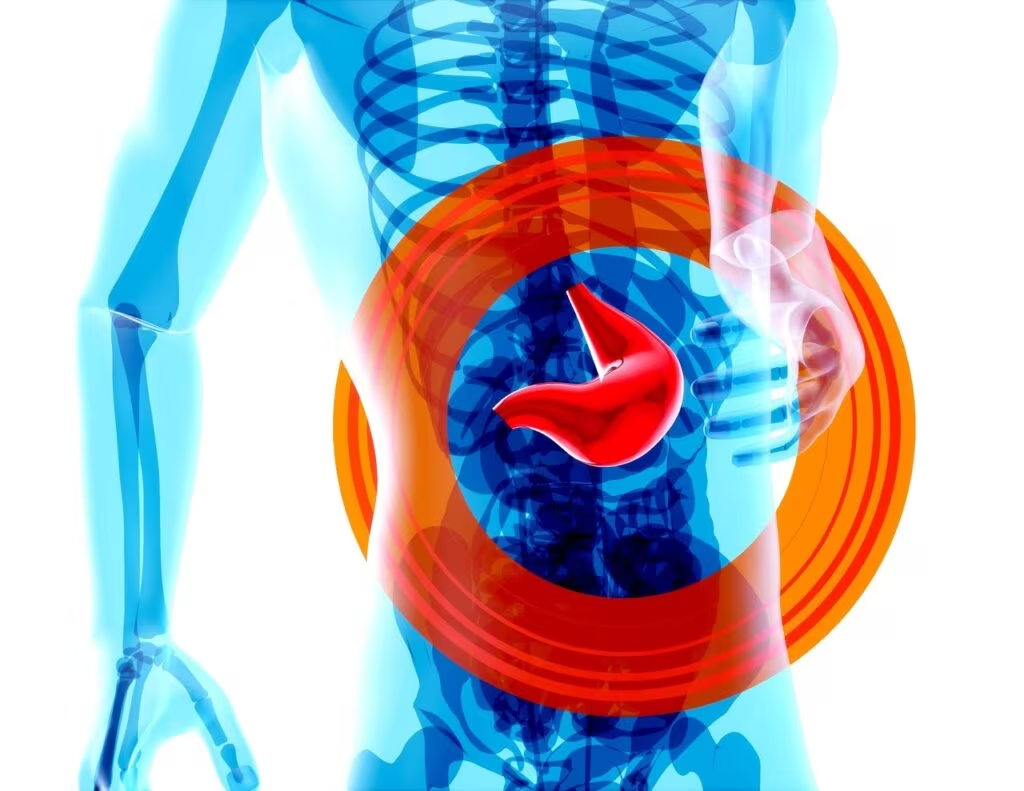The Challenge of Early Detection: Recognizing Gastric Cancer’s Subtle Start
Stomach cancer, medically known as gastric cancer, remains a significant health concern globally. A critical challenge in treating this disease is that its initial symptoms are often vague, mild, and easily confused with common, less serious digestive issues like heartburn, gas, or routine indigestion. This subtlety frequently leads to delayed diagnosis, which significantly impacts treatment outcomes.
Early detection is paramount. When caught in the localized stages, the five-year survival rate for stomach cancer is dramatically higher. Therefore, understanding the subtle, persistent warning signs—especially those affecting the upper abdominal region—is essential for proactive health management.

The Five Warning Signs That Are Difficult to Recognize at First
The initial manifestations of gastric cancer are typically characterized by persistent discomfort rather than acute pain. If these symptoms persist for more than a few weeks or worsen over time, they warrant immediate medical investigation.
1. Mild Upper Abdominal Discomfort or Dull Pain
The very first sign often reported is a mild stomach discomfort, localized in the upper abdominal region. This sensation is usually described as a dull ache or persistent feeling of fullness, rather than sharp pain. Because it is so mild, patients often attribute it to stress, a heavy meal, or a minor stomach bug. Crucially, this discomfort may not be relieved by over-the-counter antacids or changes in diet, differentiating it from typical heartburn.
2. Persistent Indigestion and Heartburn (Dyspepsia)
While occasional heartburn is common, persistent dyspepsia (indigestion) that does not resolve is a key indicator. This includes chronic burning sensations in the chest or throat, bloating, and excessive gas. Unlike typical acid reflux, which often responds well to medication, cancer-related indigestion tends to be relentless and progressive. The persistent nature of the symptom is the most important factor to monitor.
3. Early Satiety (Feeling Full Quickly)
Early satiety refers to the sensation of being full after consuming only a small amount of food. This occurs because the tumor, or the inflammation it causes, can obstruct the stomach’s ability to expand or empty properly. If you find yourself unable to finish meals you previously enjoyed, or feel uncomfortably full after just a few bites, this symptom should not be ignored. This often leads directly to the next sign.
4. Unexplained Loss of Appetite and Weight Loss
A noticeable and unexplained reduction in appetite is a common early symptom. This is often linked to early satiety and general digestive distress. When combined with significant, unintentional weight loss—losing 5% or more of your body weight over six to twelve months without trying—it becomes a highly suspicious symptom that requires urgent medical evaluation. This weight loss is not due to dieting; it is a systemic response to the disease.

5. Persistent Nausea or Vomiting
While vomiting is often associated with advanced disease, persistent, unexplained nausea can be an early warning. If the tumor begins to block the pylorus (the outlet of the stomach), vomiting may occur frequently after meals. If the vomit contains traces of blood (which may appear dark brown or like coffee grounds), this indicates bleeding in the upper gastrointestinal tract and necessitates immediate emergency medical care.
Why Gastric Cancer Symptoms Are So Easily Missed
The primary reason these symptoms are difficult to recognize is their overlap with benign, everyday conditions. Most people who experience heartburn or a dull stomach ache do not have cancer; they have functional dyspepsia or GERD (Gastroesophageal Reflux Disease).
However, the key differentiator is persistence and progression. When symptoms are chronic, worsen over time, and fail to respond to standard treatments, they must be investigated. Furthermore, the symptoms often do not become severe until the cancer has progressed to a later stage, underscoring the importance of vigilance regarding subtle changes.
Key Risk Factors to Consider
While anyone can develop stomach cancer, certain factors increase the risk. Awareness of these factors, combined with the presence of subtle symptoms, should prompt a consultation with a healthcare provider:
- Age: Risk increases significantly after age 55.
- Chronic H. pylori Infection: This bacterium is a major cause of stomach inflammation and ulcers, and the leading global cause of gastric cancer.
- Diet: Diets high in smoked, salted, or pickled foods, and low in fresh fruits and vegetables.
- Smoking and Alcohol: Tobacco use significantly increases risk.
- Family History: Having a first-degree relative (parent, sibling) with stomach cancer.
- Chronic Conditions: Conditions like pernicious anemia or chronic atrophic gastritis.
When to Consult a Specialist
Given the seriousness of gastric cancer and the subtlety of its early signs, medical professionals advise seeking consultation if any of the following occur:
- Symptoms Persist: Indigestion, heartburn, or abdominal discomfort lasts for more than two to three weeks and does not improve with standard over-the-counter remedies.
- New Onset: You experience new, persistent digestive symptoms after the age of 55.
- Alarm Symptoms: The presence of any of the following:
- Unexplained, unintentional weight loss.
- Difficulty swallowing (dysphagia).
- Vomiting blood or passing black, tarry stools (melena).
- Persistent fatigue or signs of anemia.

